Cost of Contacts in 2025: How Expensive Are Contacts?
Home / Understanding Contacts /
Last Updated:
The price for contact lenses can vary depending on the brand, type, and your insurance coverage.
Table of Contents
The price range for contacts can seem broad, but they have a highly variable price tag depending on several factors. Specialty contacts that require a specialized prescription may cost more than those designed for simpler needs like mild-to-moderate myopia (nearsightedness) or hyperopia (farsightedness).
There are also many different types and brands of contacts, which can impact price based on things like wear period and function. Rigid gas permeable (RGP), or hard contacts, are approved for daily use for up to a year. They can provide a high quality of visual clarity and refractive error correction.
The Centers for Disease Control and Prevention (CDC) publishes that the vast majority of people in the United States who wear contacts (about 90 percent) wear soft contact lenses. Soft contacts are intended for daily use. They can either be daily disposable or meant for reuse for a week or a month, depending on the type and brand.
There are also contacts that have been approved for long-term and extended use. These extended wear contacts can have a variable price tag as well, depending on type and brand.
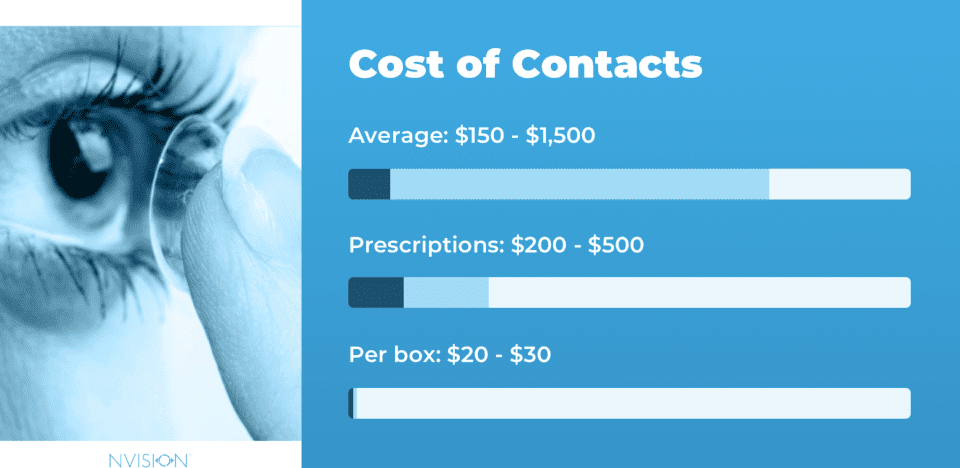
How Much Are Contact Lenses?
While we should expect prices to be subject to change due to inflationary factors, these are all the range of pricing you can expect for different varieties of contacts:
- Rigid Gas Permeable (RGP) Lenses – These hard lenses offer excellent clarity and are reusable for up to one year. They generally range from $100 to $200 per pair.
- Daily Wear Contacts – These can range from the daily disposable contacts to those designed for reuse on a weekly or monthly basis. The cost can range from $17 to $50 per box for daily disposables and $25 to $88 for weekly or monthly disposables.
- Extended Wear Contacts – These lenses are designed to be worn overnight for up to a week or even a month. The prices generally fall around $45 to $65 per box for six lenses.
- Specialty Contacts – Lenses for specific needs such as astigmatism, multifocal lenses, or those with special features like color tints may cost more. Expect a wider price range depending on the unique requirements.
You deserve clear vision. We can help.
With 135+ locations and over 2.5 million procedures performed, our board-certified eye surgeons deliver results you can trust.
Your journey to better vision starts here.
Buying in bulk, such as several boxes at once, may qualify you for a discount. Check with your insurance provider to see if they also offset some of the cost.
There may also be a fitting fee for prescription contacts, so factor that in. Fitting costs can be anywhere from $25 to over $250, depending on the complexity of your prescription and the care provider’s pricing structure.
Beyond the price tag of contact lenses, though, there’s the consideration of your comfort and convenience. Just be ready to take responsibility for your eye health – wearing contact lenses past their expiration time is bad for your eyes, and can lead to things like corneal ulcers and other eye damage. Remember that contacts are taken out each night, disinfected, and used up to the recommended number of uses before disposal. If you can’t commit to changing your contacts on a regular basis, you should just skip them and get glasses instead.
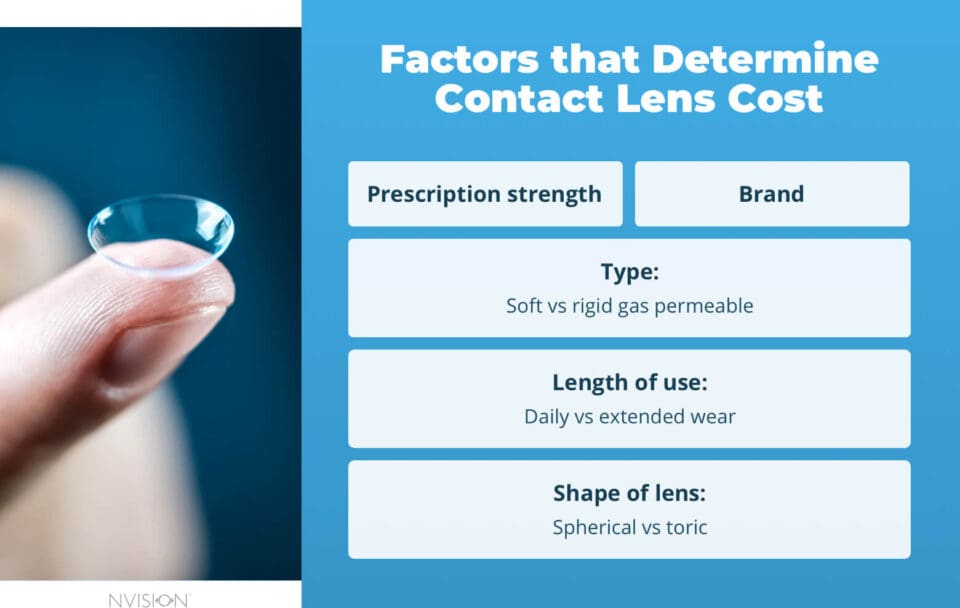
Rigid Gas-Permeable Contact Lenses Costs
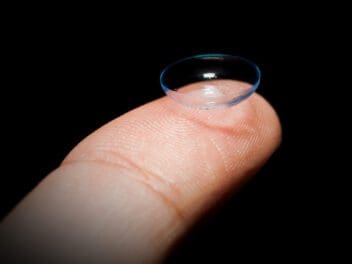
Rigid gas permeable (RGP) contact lenses are hard lenses made from plastic. They are less flexible than the softer contacts and can often offer clearer vision.
Most do not contain water, so they often carry less risk for bacterial buildup. They can become dislodged more easily than soft contacts, and debris can get caught underneath them.
RGP contacts typically cost more than disposable contacts, as they are approved to be reused daily for up to a year. The average cost of RGP contacts is about $100 per lens, so $200 for a pair. Discount retailers may be able to offer these lenses for as low as $30 per lens, and they often offer incentives and lower prices for buying in bulk.
Costs can vary from brand to brand and for specialty lenses. Contacts designed to treat astigmatism or corneal refractive therapy may cost more than those correcting for myopia.
Boston XO2 RGP contacts by Bausch and Lomb cost around $35 to $50 per lens retail, adding about $95 per lens for non-spherical lenses, such as a toric lens that corrects for astigmatism or hyperopia. By comparison, Fluoroperm 30 RGP contact lenses by Paragon Vision Sciences are about $90 per lens retail price with the same additional cost for non-spherical lenses. These lenses are typically more expensive as they are designed for special eye needs.
RGP contact lenses are less common. They can therefore be harder to find and purchase, which can make them more expensive. If you take care of them properly, they may be the only contact purchase you have to make all year.
How Much are Daily Use Contacts?
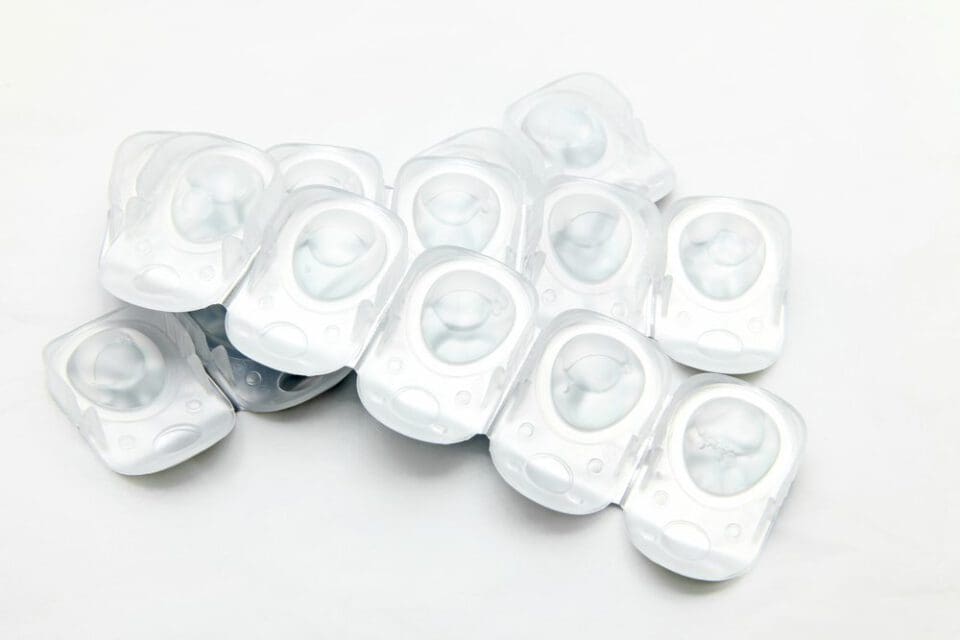
Daily use contacts are soft, flexible, and common, so there are a lot of options. There are daily disposal contacts, daily reusable contacts that are disposed of weekly, and daily reusable contacts that are disposed of monthly. Daily disposable contacts typically come in a box with 30 or 90 pairs of lenses.
Prices for contact lenses go up as the refractive error or specialty needs increase. The most expensive lenses are bifocal or multifocal lenses or those correcting for astigmatism (irregular corneal shape) or presbyopia (farsightedness related to age).
If contacts have newer technology, such as those made to be more oxygen-permeable or moist to prevent dry eyes, they can be more expensive. The same goes for contacts that have tints for color or ultraviolet (UV) light protection.
Daily Disposable Contacts (lowest to highest):
- DAILIES AquaComfort Plus 30 pack by Aclon: average retail price of $17 a box for a month’s supply, about $204 annually
- Proclear 1 Day 90 pack by CooperVision: average retail price of $50 per box for a three-month supply, about $200 annually
- Biotrue ONEday (30 pack) by Bausch + Lomb: average retail price of $25 a box for a month’s supply, about $300 annually
- SofLens Daily Disposable Toric for Astigmatism 30 pack by Bausch + Lomb: average retail price of $25 a box for a month’s supply, about $300 annually
- 1-Day Acuvue Moist 30 pack by Johnson & Johnson Vision Care: average retail price of $32 a box for a month’s supply, about $384 annually
- 1-Day Acuvue Moist for Astigmatism 90 pack by Johnson & Johnson Vision Care: average retail price of $100 a box for a three-month supply, about $400 annually
- Clariti 1-day Multifocal 90 pack by CooperVision: average retail price of $80 a box for a three-month supply, about $320 annually
- Extreme H2O Daily 30 pack by X-Cel Specialty Contacts: average retail price of $40 per box for a month’s supply, about $480 annually
- Biotrue ONEday for Presbyopia (90 pack) by Bausch + Lomb: average retail price of $122 a box for a three-month supply, about $488 annually
- 1-Day Acuvue Moist Multifocal 30 pack by Johnson & Johnson Vision Care: average retail price of $45 a box for a month’s supply, about $540 annually
Weekly Disposable Contacts (lowest to highest):
- Avaira Vitality by CooperVision: average retail price of $25 for a box of six lenses
- Acuvue 2 by Johnson & Johnson Vision Care: average retail price of $28 a box for six lenses
- SofLens 38 by Bausch + Lomb: average retail price of $28 a box for six lenses
- Extreme H2O 59 Thin by X-Cel Specialty Contacts: average retail price of $40 a box for six lenses
- Biomedics 55 Premier by CooperVision: average retail price of $30 a box for six lenses to be replaced every two weeks
- Freshlook COLORBLENDS by Alcon: average retail price of $88 a box for six lenses
Monthly Disposable Contacts (lowest to highest):
- Extreme H2O 54 by X-Cel Specialty Contacts: average retail price of $35 a box for six lenses
- Biofinity by CooperVision: average retail price of $18 for a box of six lenses
- Air Optix Aqua by Alcon: average retail price of $18 for a box of six lenses
- Bausch + Lomb Ultra by Bausch + Lomb: average retail price of $39 for a box of six lenses
- PureVision 2 by Bausch + Lomb: average retail price of $37 for a box of six lenses
- Acuvue Vita by Johnson & Johnson Vision Care: average retail price of $32 for a box of six lenses
The most cost-efficient option is to get contacts designed to wear as long as possible. However, the healthiest and most hygienic option are the one-day lenses, but they’ll cost the most in the long run.
You deserve clear vision. We can help.
With 135+ locations and over 2.5 million procedures performed, our board-certified eye surgeons deliver results you can trust.
Your journey to better vision starts here.
How Much Are Extended Wear Contacts?
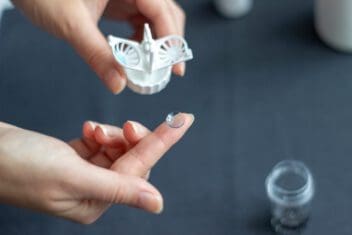
There are some contacts that are approved for extended-wear, which means that you may be able to leave them in your eyes overnight for up to a week or even a month, depending on the type. These contacts are meant to be more breathable than daily use contacts. Even for extended wear, you should know that wearing contacts overnight, even if they are approved for this use, can increase the risk for eye infections.
Extended wear contact brands and types include brands, such as Air Optix Night & Day by Aclon, which retail for around $45 a box for six lenses, and Biofinity by CooperVision, which retails for around $65 for a box containing six lenses.
Some extended wear contacts are meant to be changed once every six or seven days, like the Biofinity, while others are approved for monthly wear. In general, you get what you pay for. High-end contact lenses may offer more convenience, more customization, and have more features, such as color tint or UV protection. Your eye care professional can help you navigate the landscape and decide which type of contact will be optimal for your eyes and lifestyle.
Where to Buy Contact Lenses
You may be able to order contacts directly from an optometrist’s office after getting your prescription. After that, contacts are available at most any big-box retailer or specialty drug store. There are also online retailers, but be very cautious ordering off a website. Bear in mind that in the US, it is illegal to sell contacts without a prescription, so if you see somebody just hustling cases of contacts willy-nilly, you should ask yourself what other corners they’re cutting.
You deserve clear vision. We can help.
With 135+ locations and over 2.5 million procedures performed, our board-certified eye surgeons deliver results you can trust.
Your journey to better vision starts here.
References
- Boston XO2. (2019). Bausch & Lomb.
- The Paragon HDS Technology. Paragon Vision Sciences.
- DAILIES Brand Lenses. (2018). Novartis.
- Proclear 1 Day Contacts. (2019). CooperVision.
- Biotrue ONEday Contact Lenses. (2019). Bausch & Lomb.
- SofLens Daily Disposable Toric for Astigmatism. (2019). Bausch & Lomb.
- 1-Day Acuvue Moist. (2017). Johnson & Johnson.
- 1-Day Acuvue Moist Brand Contact Lenses for Astigmatism. (2017). Johnson & Johnson.
- Clariti 1-day Multifocal. (2019). CooperVision.
- Extreme H2O Daily. (2019). Extreme H2O Contact Lenses.
- Biotrue ONEday Lenses. (2019). Bausch & Lomb.
- Acuvue Brand Contact Lenses. (2017). Johnson & Johnson.
- Avaira Vitality. (2019). CooperVision.
- Acuvue 2 2- Week Contact Lenses. (2017). Johnson & Johnson.
- SofLens 38 Contact Lenses. (2019). Bausch & Lomb.
- Biomedics 55 Premier. (2019). CooperVision.
- FreshLook Color Contacts. (2016). Novartis.
- Extreme H2O 54. (2019). Extreme H2O Contact Lenses.
- Biofinity Family. (2019). CooperVision.
- Air Optix Aqua. (2018). Novartis.
- Bausch & Lomb ULTRA Contact Lenses With MoistureSeal Technology. (2019). Bausch & Lomb.
- PureVision2 Contact Lenses. (2019). Bausch & Lomb.
- Acuvue Vita Monthly Contact Lenses. (2017). Johnson & Johnson.
- Healthy Vision and Contact Lenses. (2019). American Optometric Association.
- Contact Lenses: What to Know Before You Buy. (October 2015). Mayo Clinic.
- Air Optix Night & Day. (2018). Novartis.
This content is for informational purposes only. It may have been reviewed by a licensed physician, but is not intended to serve as a substitute for professional medical advice. Always consult your healthcare provider with any health concerns. For more, read our Privacy Policy and Editorial Policy.
